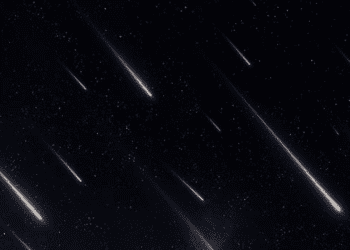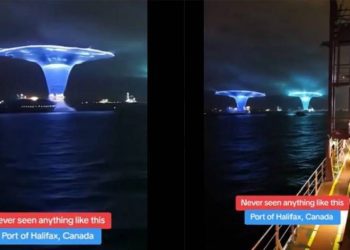NASA launched a mission in October that aims to explore a 140-mile-wide metallic asteroid by the name of 16 Psyche.
An object like 16 Psyche, considered to be the exposed core of a destroyed planet, has never been visited by any spacecraft – especially not one that is worth $10,000 quadrillion.


Asteroid 16 Psyche, the focus of NASA's upcoming Psyche mission, astonishingly holds an estimated value of $100,000 quadrillion.
Located in the main asteroid belt between Mars and Jupiter, Psyche is believed by scientists to be the exposed metallic core of a long-lost protoplanet.
If these metals were present on Earth, their value would surpass the entire global economy, as estimated by Lindy Elkins-Tanton, the lead scientist for the Psyche mission, per Space.com.
As an M-type asteroid, Psyche is recognized as metallic, although the exact composition of its metals remains uncertain.
Scientists use spectroscopy to determine the composition of celestial objects, a process that breaks down the light emitted by an object into a spectrum, giving it a unique “spectral fingerprint.”
WHAT'S THE WORD
“Unfortunately, metal doesn't have a unique spectral fingerprint,” Vishnu Reddy, professor at the Lunar and Planetary Laboratory at the University of Arizona, said to Space.com.
“You can tell that something's metallic, but you can't specifically tell which metal it is,” he added.
He also mentioned to the scientific outlet that while radar methods show Psyche's surface is highly reflective, they do not specify the nature of the reflective material.
According to him, many scientists suspect that Psyche's surface is predominantly composed of nickel and iron, given their prevalence in asteroids.
By using computer simulations and examining the large impact craters on Psyche's surface, scientists can hypothesize what materials the asteroid must be made of to endure the impacts that created these craters, a Science.com report said.
Wendy Caldwell, a researcher at Los Alamos National Laboratory, told Space.com that her most promising findings, including those from a 2020 study, indicate that the asteroid might be composed of Monel.
This metal, primarily consisting of nickel and copper, is thought to reflect the typical composition of metallic objects in space.
No matter what materials make up Psyche, the asteroid likely holds so much metal that estimating its quantity and applying the current market value results in an astounding number.
Elkins-Tanton estimated that mining just the iron from Psyche alone could yield a value of $100,000 quadrillion.
This is, of course, purely based on metal value — not USD as there is not enough money in the world to reach that estimate.
Major facts about Psyche

It's been over 220 days since 16 Psyche launched.
Here are some facts to keep in mind about it from NASA:
- Discovered in 1852 by Italian astronomer Annibale de Gasparis, Psyche snagged the 16th spot on the asteroid identification list. Psyche, the butterfly-winged goddess symbolizing the soul in Greek mythology, is its namesake.
- Psyche takes a scenic route in the outer realms of the main asteroid belt, chilling between Mars and Jupiter. That's approximately three times the distance from the Sun compared to Earth.
- When it comes to shape, Psyche's vibe is all about the irregular, potato-like aesthetic. Slice it horizontally at the equator, and you've got yourself a squashed oval, measuring a whopping 173 miles across at the widest and 144 miles long. That's one quirky space spud!
- Psyche's got it all, weighing in between 212 to 256 pounds per cubic foot. With surface gravity lower than Earth's or even the Moon's, lifting a car here feels more like hoisting a hefty dog.
- Psyche likely sports a hefty metal makeover, courtesy of a planetesimal's core. Surviving epic cosmic collisions, it's a living relic of our solar system's tumultuous infancy.
- Psyche's composition isn't your run-of-the-mill space rock. Think rock-metal fusion, with metals possibly making up a hefty 30% to 60% of its volume. Radar and thermal inertia measurements have helped crack this celestial composition conundrum.
- Scientists have cooked up a 3D model of Psyche, revealing two crater-like depressions and a kaleidoscope of metal content and color across its surface. But until the Psyche mission swings by for a visit, we're left guessing about its true appearance. Talk about keeping us on the edge of our cosmic seats!
'FULL CRUISE'
Having turned on Psyche's electric Hall thrusters, NASA is now guiding the spacecraft towards a metal-rich asteroid situated within the main asteroid belt past Mars, The Verge reported.
The agency confirms that Psyche is currently operating in “full cruise” mode, marking six months since its launch on October 13th, 2023, via a conventional SpaceX rocket, per the outlet.
En route, NASA leveraged Psyche to experiment with laser-based deep space communications.
From a distance of approximately 10 million miles, the spacecraft beamed a communications laser back to Earth, marking a pioneering feat for NASA, The Verge reported.
Expected to rendezvous with its namesake, the Psyche asteroid, by 2029, the spacecraft will conduct a two-year orbit around it, gathering observations and transmitting data back to NASA.
Scientists speculate that Psyche might actually represent the primordial core of a planet, also referred to as a planetesimal.
The probe is operating on ion propulsion, which produces thrust by energizing xenon particles, propelling them out of the thruster.
Although ion propulsion lacks the capability to launch a rocket from Earth, it can gradually achieve impressive speeds.
NASA currently indicates that Psyche is traveling at 23 miles per second, equivalent to about 84,000 mph, with an eventual target speed of 124,000 mph.
These thrusters, similar to those on Psyche, offer durability due to their lack of moving parts and efficiency in fuel usage, making them suitable for smaller spacecraft.
They also boast an appealing visual aspect when activated, per The Verge.


































